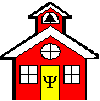Department of Educational Psychology
Document Type
Article
Date of this Version
2010
Citation
Encyclopedia of Cross-Cultural School Psychology, volume 2 (2010), p. 852-854, edited by Caroline S. Clauss-Ehlers. DOI: 10.1007/978-0-387-71799-9_372.
Abstract
A safe school is a school where the educational climate fosters a spirit of acceptance for all children. It is a place where students can learn and teachers can teach in an environment free of intimidation and fear of violence. Over the past decade, school shootings have increased anxieties about the safety of our schools. As a result of highly publicized acts of school violence in the media, national attention has recently focused on violence in public schools.
School violence is defined as any action or threat of action resulting in intimidation, coercion, physical harm, or personal injury. While estimates of school violence vary, acts of school violence range from bullying to violent deaths; including self-mutilation, suicide, and homicide. The most prevalent forms of school violence involve verbal and physical harassment, bullying, self-destructive behavior, systemic and structural oppression, and physical fighting.
The entry also covers issues such as prevalence, risk factors, gender, the school climate, psychological consequences, and prevention and intervention.


Comments
Copyright 2010, Springer. Used by permission.